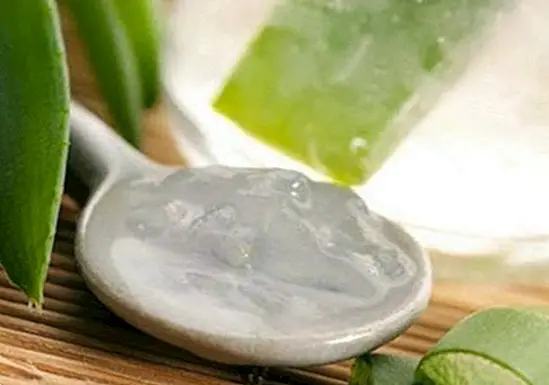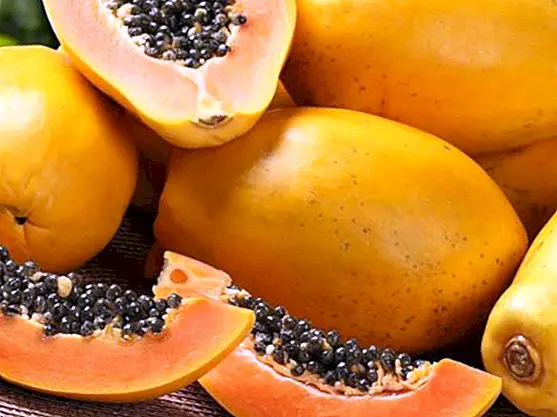High bilirubin: how to lower it naturally and effectively
Index
- Direct bilirubin (conjugated)
- Indirect bilirubin (free, unconjugated)
- Normal values
- Analysis of bilirubin in urine
- Low bilirubin
- Why does it increase
- How to lower bilirubin
- Bilirubin in pregnancy
The bilirubin It is a yellow pigment that we find in bile, a liquid that is produced by the liver. In the laboratory analysis itself, we tend to measure a total of 3 parameters (direct, indirect and total bilirubin), although usually the main one is usually indicated (total bilirubin), which is the sum of the two. But what to do when they find us elevated bilirubinWhat are its causes and how can we reduce it?
Normal values of direct bilirubin range from 0 to 0.3 mg / dL, while total bilirubin should be around 0.3 to 1.9 mg / dL, although this is a figure that may vary slightly from one laboratory to another.

In cases where bilirubin reaches a level greater than 2.5 mg / dL, a symptom called jaundice, which consists of the yellowing of both the skin and the sclera of the eye.
Therefore, it can be extremely useful to know in what way we can lower high bilirubin, another analytical parameter that tends to rise when something is not quite right in our body.
What is high bilirubin
The bilirubin consists of a yellowish pigment what is the result of the degeneration of the hemoglobin of the different red blood cells, which are in poor condition.
This process is generated in the spleen, an organ that among other important functions, has the capacity to destroy the different old blood cells.
Then, the bilirubin tends to travel to the liver to be stored in the gallbladder, where it will eventually form part of the bile and end up being excreted through the stool (in fact, it is the pigment that gives color to the stool).
When there is elevated bilirubin it means that there is a problem in the liver, pancreas or gallbladder, and medically it is known by the name of hyperbilirubinemia.
There are three types of bilirubin in blood, so that before a blood test we can find the elevation of one of these parameters in particular, so that their causes could vary: indirect bilirubin, direct bilirubin and total bilirubin (which is the sum of the two previous values).
Causes of high bilirubin: why it increases
As we explained, there are three types of bilirubin in blood, so the causes that have caused its elevation will be different. For the most part, in all cases they are a warning signal that there is a problem in the liver, in the pancreas or in the gallbladder.
Causes of high direct bilirubin
It is, above all, a parameter that, when elevated, tends to be an indication that there may be some type of liver disease. It is also known as conjugated bilirubin.
However, as we will see below, it can also alert about the presence of some obstruction in the bile ducts. The main causes are the following:
- Acute hepatitis:It occurs when there is inflammation in the liver, especially by the deficiency in the elimination of toxins, which accumulate in this organ.
- Hepatic cirrhosis:Although it is directly related to the presence of cirrhosis in the liver, it is a symptom that in many cases appears late, indicating the existence of significant damage.
- Dubin Johson syndrome:genetic disorder in which the liver tends to change color as a result of the accumulation of pigments. It is usually diagnosed in childhood.
- Rotor syndrome:It is a rare disease of hereditary origin, usually benign, that causes the elevation of conjugated bilirubin in blood, but below 10 mg / dL.
- Obstruction of the bile ducts:it is another cause, and not so related to the liver. It occurs as a result of gallstones, or the presence of tumors in the pancreas.

Causes of high indirect bilirubin
In this case we have a parameter that can not only rise in the presence of any liver disease. It is also known as unconjugated bilirubin, and its causes are the following:
- Hemolytic anemia: occurs as a result of the red blood cells are destroyed before time, not being able to perform their function.
- Gilbert's syndrome:It is a genetic disease in which the liver is not able to process bilirubin as a result of an enzyme deficit.
- Other causes:indirect bilirubin can also increase as a result of a fetal erythrobastosis, the resolution of a large hematoma and have problems in blood transfusions.
How to lower high bilirubin?
There are some basic recommendations that can help lower high bilirubin in the blood:
- The liquid is essential to eliminate those toxins that your body does not need. To do this, drink at least 2 liters of water per day, and also choose healthy infusions, herbal teas and teas.
- Liver tonics such as dandelion, artichoke, verbena or wild yam can help purify the liver. Do not forget the milk thistle either.
- Alcohol is one of the biggest culprits when the liver stops working, or does not work properly, even producing the so-called fatty liver. It should always be taken moderately, and opt for beer or wine better. In any case, you should avoid taking any form of alcohol.
- The food also affects the health of the liver. Eliminate those fatty foods that can harm you, and opt for a healthy food. Basically you should eliminate fat from your diet. Foods such as sausages, red and white meats, processed foods and fats, fried foods, dairy products, and eggs are prohibited.
- In case the bilirubin is accompanied by inflammation precisely because of the appearance of fat in the liver, salmon oil and artichoke can help you positively.
In any case, remember that you should always know what high bilirubin is increased, to know its causes and seek the best treatment for it. This article is published for informational purposes only. It can not and should not replace the consultation with a Physician. We advise you to consult your Trusted Doctor. ThemesGallbladder



